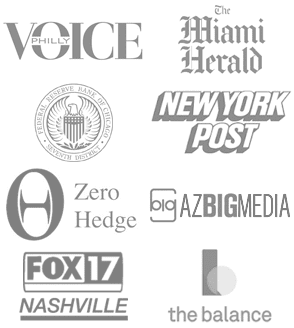In 2025, prospective home buyers continue to weigh options between fixed-rate and adjustable-rate mortgages (ARMs). Among ARMs, the 10/1 adjustable rate mortgage stands out as a hybrid product that combines stability with potential flexibility. As of September 2025, with 10/1 mortgage rates fluctuating amid economic uncertainties, understanding this loan type is crucial for informed decision-making. The RefiGuide published this article to consider what a 10/1 ARM mortgage entails, how it operates, its ten year advantages and drawbacks, and illustrates its real-world implications through three case studies.
Defining the 10/1 ARM Loan in 2025

A 10/1 ARM is a type of adjustable-rate mortgage with a 30-year term.
The “10” refers to the initial fixed-rate period of 10 years, during which the interest rate remains unchanged, providing predictable monthly payments.
The “1” indicates that after this introductory phase, the rate adjusts annually for the remaining 20 years.
This 10/1 ARM structure contrasts with fully fixed-rate mortgages, where the rate is locked for the entire duration, or shorter ARMs like the 5/1, which adjusts after just five years.
Typically, the initial rate on a 10/1 ARM is lower than that of a comparable 30-year fixed mortgage, making it attractive for borrowers seeking affordability upfront. As of September 10, 2025, the national average annual percentage rate (APR) for a 10/1 ARM hovers around 6.19%, compared to higher fixed rates in the mid-6% to low-7% range, depending on credit scores and market conditions. This lower teaser rate can translate to significant savings in the early years, potentially hundreds of dollars per month on a $400,000 loan.
The adjustment mechanism is tied to a financial index, such as the Secured Overnight Financing Rate (SOFR) or the yield on U.S. Treasury securities, plus a fixed margin set by the lender. For instance, if the index is 4% and the margin is 2.5%, the adjusted rate could be 6.5%. However, safeguards like rate caps protect borrowers: an initial cap (often 2-5%) limits the first adjustment, periodic caps (typically 2%) restrict annual changes thereafter, and a lifetime cap (usually 5%) caps the maximum rate increase over the loan’s life.
How a 10/1 ARM Mortgage Works in Practice
To grasp its functionality, consider a hypothetical $300,000 loan at a 5.5% initial rate. For the first 10 years, payments might be approximately $1,703 monthly (principal and interest only). After year 10, if market rates rise and the new rate jumps to 7.5% (within caps), payments could increase to around $2,098—a 23% hike. Conversely, if rates fall to 4.5%, payments might drop to $1,520, offering relief.
Lenders qualify borrowers based on the fully indexed rate or a higher stressed rate to ensure affordability post-adjustment. This mortgage suits those expecting income growth, planning to relocate within a decade, or anticipating lower future rates. However, it’s less ideal for long-term homeowners in rising-rate environments.
Pros and Cons of a 10 Year ARM Loan
Like any financial product, the 10/1 ARM has distinct benefits and risks.
Pros:
- Lower Initial Costs: The introductory rate is typically 0.5-1% below fixed rates, reducing early payments and freeing up cash for other investments or home improvements.
- Extended Stability: Unlike shorter ARMs, the 10-year fixed period offers longer predictability, ideal for families or those in transitional life stages.
- Potential Savings if Rates Drop: Post-adjustment, falling market rates could lower payments without refinancing.
- Flexibility for Short-Term Ownership: Borrowers planning to sell or refinance before year 11 avoid adjustment risks.
Cons:
- Rate Uncertainty: After 10 years, rates could rise significantly, leading to “payment shock” and higher costs.
- Higher Long-Term Risk: In a high-rate environment, total interest paid might exceed a fixed mortgage if adjustments trend upward.
- Refinancing Costs: To escape rising rates, borrowers may need to refinance, incurring fees (2-5% of loan amount) and potential credit checks.
- Qualification Challenges: Some lenders use conservative underwriting, potentially limiting loan amounts for marginal borrowers.
Weighing these factors requires assessing personal finances, market forecasts, and housing plans. In 2025, with the Federal Reserve’s rate policies in flux, ARMs like the 10/1 are gaining traction amid hopes for rate cuts.
Case Study 1: The Short-Term Homeowner’s Win with 10/1 ARM
Meet Sarah, a 32-year-old tech professional in Seattle, who purchased a $500,000 condo in 2023 with a 10/1 ARM at 4.75% initial rate. Her monthly payment was $2,085, compared to $2,400 on a 30-year fixed at 6%. Planning to relocate for a promotion within seven years, Sarah benefited from the lower rate, saving over $40,000 in interest during the fixed period.
By 2030, she sold the property amid a booming market, avoiding any adjustments. The ARM’s structure aligned perfectly with her timeline, allowing her to build equity faster and invest savings in stocks, which yielded 8% annually. This case highlights how a 10/1 ARM can be advantageous for mobile professionals expecting career moves.
Case Study 2: The Risk of Mortgage Rate Increases
John and Lisa, a retired couple in Florida, opted for a 10/1 ARM in 2018 for their $400,000 retirement home, securing a 3.5% initial rate and $1,436 monthly payments. They intended to stay long-term, underestimating future rate hikes.
In 2028, as the adjustment period began, rates climbed due to inflation, pushing their rate to 5.5% (capped at 2% initial increase). Payments rose to $1,817, straining their fixed income. By 2030, further adjustments to 7% increased it to $2,128— a 48% jump. Unable to refinance amid health issues and tighter credit, they faced financial stress, dipping into savings.
This scenario underscores the dangers for long-haul homeowners in volatile economies, where ARMs can erode budgeting stability.
Case Study 3: 10/1 ARM Refinancing for Long-Term Security
Alex, a 40-year-old entrepreneur in Austin, took a 10/1 ARM in 2024 for a $600,000 house at 5.25%, with payments of $2,654—saving $300 monthly versus a fixed rate. He used the extra funds to grow his business.
By 2034, rates had dropped to 4% due to economic recovery. His ARM adjusted downward initially but risked future rises. Alex refinanced to a 20-year fixed at 4.5%, locking in $3,000 payments (post-principal reduction) and avoiding uncertainty. The refinance cost $8,000 but was offset by prior savings and business gains.
This case demonstrates how proactive borrowers can leverage a 10/1 ARM as a bridge to better terms, especially if market conditions improve.
Takeaways on 10/1 Adjustable Rate Mortgages
A 10/1 ARM offers a compelling blend of initial affordability and extended fixed-rate security, but it’s not without pitfalls, particularly the unpredictability after year 10. As illustrated in the case studies, success depends on individual circumstances—short-term plans favor it, while long-term commitments demand caution. In September 2025’s market, with average rates at 6.19%, consulting a financial advisor is wise to simulate scenarios. Ultimately, this mortgage can be a smart tool for savvy buyers, but thorough due diligence is essential to avoid regrets.
